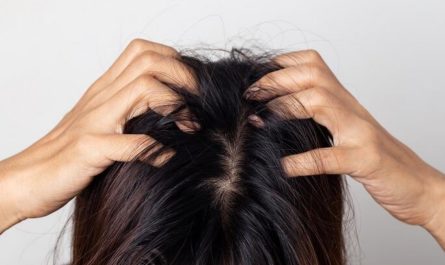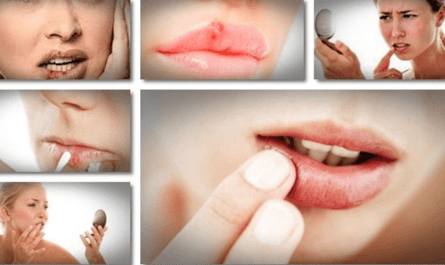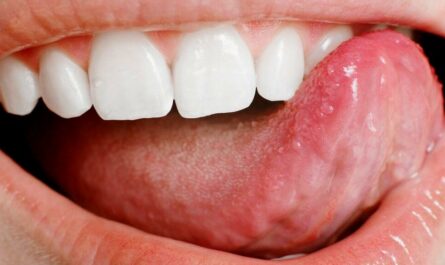Rashes on the buttocks can be uncomfortable and sometimes embarrassing. They can occur due to various reasons, ranging from allergies to infections. Understanding the common causes and treatments of a rash on the buttocks can help you identify and manage the condition effectively. In this article, we will explore ten common causes of rashes on the buttocks and provide some best treatments.
What is a Buttock Rash?
A buttock rash refers to a skin condition characterized by redness, irritation, and itching in the area between the buttocks. It can occur due to various factors, including friction, heat, moisture, fungal or bacterial infections, allergic reactions, or underlying skin conditions such as eczema or psoriasis.
The rash can range from mild to severe and may cause discomfort and inconvenience. Proper hygiene, appropriate skincare, and home remedies or medical treatments can help alleviate the symptoms and promote healing.

Symptoms of Buttock Rash
The symptoms of buttock rash can vary depending on the underlying cause. Common symptoms include:
- Redness or discoloration of the skin
- Itching or irritation
- Pain or tenderness
- Bumps, blisters, or pustules
- Dry or flaky skin
- Peeling or cracking of the skin
If the rash persists, worsens, or is accompanied by other concerning symptoms, it is advisable to seek medical attention for proper diagnosis and treatment.
14 Common Causes of Buttock Rash with Treatment
1. Contact Dermatitis
Contact dermatitis is a common skin condition characterized by inflammation resulting from exposure to irritants or allergens. It often manifests as a red, streaky, or patchy rash at the site of contact. Dyes, soaps, shampoos, detergents, industrial chemicals, and cement are common irritants.
To treat contact dermatitis, it is crucial to thoroughly wash the affected area to remove the irritant or allergen. Avoiding further exposure to the triggering substance is essential.
Additionally, supportive care can be provided through moisturizers, wet dressings, and anti-itching lotions. In severe cases, corticosteroid creams may be necessary.
2. Urticaria or Hives
Urticaria or hives are allergic reactions triggered by allergens that a person is sensitive to. Unlike contact dermatitis, urticaria is usually caused by ingested or inhaled allergens.
Insect bites can also lead to the development of hives. Itching is a common accompanying symptom of this type of skin rash.
The treatment approach for urticaria involves using antihistamine medications to alleviate symptoms. It is important to identify and avoid allergens that trigger the condition.
Additionally, measures such as refraining from hot baths or wearing tight clothes can help prevent further irritation of the rash area.
3. Eczema
Eczema or atopic dermatitis is characterized by prolonged, scaly, and itchy rashes. Exposure to certain substances can exacerbate the symptoms and lead to a rash on the buttocks.
Treating eczema involves using moisturizer creams and topical steroid creams to relieve itching and inflammation.
It is important to identify and avoid substances that worsen the symptoms. Antihistamine medications may also be prescribed to alleviate itching.
4. Psoriasis
Psoriasis is a chronic skin disorder characterized by thickened, red skin covered with silver-white scales. While buttock rash is not the typical location for psoriasis lesions, it can also occur in this area.
The treatment of psoriasis involves topical approaches such as cortisone creams, coal tar or anthralin-containing creams, moisturizers, and vitamin D or vitamin A derivatives.
In more severe cases, novel systemic immunosuppressant drugs such as etanercept or infliximab may be prescribed. Phototherapy can also be beneficial.
5. Systemic Lupus Erythematosus
Systemic lupus erythematosus (SLE) is a multisystem autoimmune disorder that can present with various symptoms, including a rash on the buttocks. Other autoimmune conditions like rheumatoid arthritis can also lead to the development of a rash.
Treatment for SLE focuses on relieving symptoms through immunosuppressant medications like nonsteroidal anti-inflammatory drugs (NSAIDs) and corticosteroids. It is important to note that there is currently no cure for this condition.
6. Cellulitis
Cellulitis refers to a bacterial infection of the skin, which can cause a rash on the buttocks. Prompt treatment is necessary to prevent the infection from spreading.
The primary treatment for cellulitis involves using antibiotics to eradicate the bacterial infection. Nonsteroidal anti-inflammatory drugs (NSAIDs) can be used for pain relief.
A thorough evaluation of underlying immune system dysfunction is essential in cases of recurrent cellulitis.
7. Erythema Nodosum
Erythema nodosum is an inflammatory condition characterized by the formation of painful nodules beneath the skin. It can occur as a secondary manifestation of various medical conditions.
The treatment of erythema nodosum revolves around reducing pain and inflammation. Nonsteroidal anti-inflammatory drugs (NSAIDs) are commonly used for pain relief. In severe cases, corticosteroids may be prescribed.
8. Food Allergies
Food allergies can manifest as a rash on the buttocks, especially in children. Common allergens include peanuts, eggs, dairy, and shellfish.
If you suspect a food allergy, consult a healthcare professional for proper diagnosis and guidance. Avoiding allergenic food is the primary treatment, and antihistamines may be prescribed to manage symptoms.
9. Tight Clothing
Wearing tight clothing or fabrics that do not allow proper air circulation can lead to rashes on the buttocks. The constant friction and irritation can cause chafing and redness.
You should choose breathable fabrics and loose-fitting clothes to minimize friction and promote healing. Applying a gentle barrier cream, such as zinc oxide, can also provide relief.
10. Prolonged Sitting
Sitting for extended periods, especially on hard or rough surfaces, can irritate the skin and contribute to developing a rash.
Taking breaks, using cushions or padded seats, and practicing good hygiene by keeping the area clean and dry can help prevent and alleviate the rash caused by prolonged sitting.
11. Heat Rash
Heat rash, also known as prickly heat, occurs when sweat ducts become clogged, trapping sweat beneath the skin. This can result in a rash characterized by small red bumps and intense itching.
Keeping the affected area cool and dry is essential to treat heat rash. Loose-fitting clothing, cool showers, and soothing calamine lotion can relieve relief.
12. Sweat Allergy
In some cases, an allergic reaction to sweat can cause a rash on the buttocks. This condition, known as cholinergic urticaria, leads to small itchy hives that may appear after sweating or exposure to heat.
Antihistamines can help manage the symptoms, and avoiding triggers such as excessive sweating or heat can prevent flare-ups.
13. Intertrigo
Intertrigo is a common cause of buttock rash and can be treated effectively. The condition arises due to friction, moisture, and heat in the skin folds, leading to irritation and inflammation. To treat intertrigo on the buttocks, several measures can be taken.
Firstly, it is important to keep the affected area clean and dry. Gently washing the buttocks with mild soap and water and patting the skin dry can help reduce moisture and prevent further irritation. Avoid using harsh soaps or scrubbing vigorously, which can worsen the condition.
Applying a thin layer of a topical antifungal or steroid cream prescribed by a healthcare professional can alleviate inflammation and combat any fungal or bacterial infections that may have developed.
Following the prescribed instructions and continuing the treatment for the recommended duration is crucial.
Wearing loose-fitting, breathable clothing can aid in reducing friction and promoting air circulation. Avoid tight undergarments or synthetic fabrics that can trap moisture. Instead, try cotton underwear and loose clothing.
14. Infections
Various infections can manifest with a rash on the buttocks, although it is not their typical presentation. Some common infections associated with buttock rash include:
- Ringworm: A fungal infection of the skin.
- Scabies: An itching skin disease caused by mites.
- Chickenpox: A viral infection characterized by itchy blisters throughout the body.
- Scarlet Fever: A bacterial infection usually starts with a fever and sore throat.
- Meningitis: Inflammation of the meninges, the covering of the brain.
- Impetigo: A bacterial infection commonly occurring at sites where the skin is broken.
- Pityriasis Rosea: A viral infection causing a commonly occurring skin rash that lasts 4-8 weeks.
- Other Infections include Rocky Mountain Spotted Fever, Lyme Disease, and Yaws.
Treatment for a rash on the buttocks caused by an infectious agent depends on the specific cause and often involves using antimicrobial agents.

When should I seek medical help for the buttock rash?
- Severe symptoms: If the rash is accompanied by intense pain, swelling, or itching.
- Spreading or worsening: If the rash spreads rapidly or worsens despite home remedies, it’s a good idea to consult a doctor.
- Persistent rash: If the rash persists for over a week or two and does not show improvement.
- Systemic symptoms: If you experience more symptoms such as fever, chills, fatigue. This could be a sign of an underlying infection or condition that requires medical attention.
- Open sores or blisters: If the rash develops open, blisters or pus-filled bumps. It may indicate a more serious infection that needs medical treatment.
- Suspected allergic reaction: If you suspect an allergic reaction to a medication or food causes the rash. Especially if you experience difficulty breathing, facial or throat swelling, or dizziness.
Frequently Asked Questions
1. Can buttock rash be contagious?
In some cases, buttock rash caused by fungal or bacterial infections can be contagious. It is essential to maintain proper hygiene and avoid sharing personal items to prevent the spread of infection.
2. When should I seek medical help for buttock rash?
If the rash persists for over a week, worsens, or shows signs of infection, such as pus or fever, you should seek medical advice.
3. Can I prevent the buttock rash from recurring?
Yes, you can take preventive measures to reduce the chances of buttock rash. These include keeping the area clean and dry, wearing loose-fitting clothing, using barrier creams or powders, and avoiding triggers such as excessive heat or moisture.






